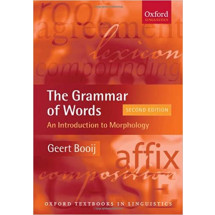This pocket-sized, inexpensive, elegant little handbook addresses the most prevalent writing problems people face. Clear and easy to understand, The Little English Handbook will help you solve any grammar, style, punctuation or research problem you may have.
This pocket-sized, inexpensive, elegant little handbook addresses the most prevalent writing problems people face. lear and easy to understand, The Little English Handbook will help you solve any grammar, style, punctuation or research problem you may have.
Format of Manuscript
1. Writing on one side of the paper
2. Double-spacing the paper
3. Leaving margins
4. Putting title on the paper
5. Numbering the pages
6. Using paper clip to fasten pages
7. Using proper paper
Clear Effective Paragraphs
8. Developing a single topic (unity)
9. Developing ideas fully (completeness)
10. Making ideas easy to follow (coherence)
Grammatical Sentences
11. Complete sentences (fragments)
12. Confusing sentences
13. Comma splices, fused sentences, and run-ons
14. Subject / verb agreement
15. Noun / pronoun agreement
16. Pronoun / antecedent agreement
17. Verb forms
18. Placement of modifiers
19. Subordinate conjunction that
20. Relative pronouns that, which, and who
Stylistic Choices: Sentences and Words
21. Concise Sentences (wordy sentences)
22. Awkward sentences
23. Varying sentences
24. Coordination and subordination
25. Parallel construction
26. Repetition
27. Active and passive verbs
28. Correct, exact, and appropriate words
29. Correct idioms
30. Trite or overused expressions
31. Mixed metaphors
32. Biased or sexist language
Punctuation and Mechanics
33. Apostrophe shows possession
34. Possessive pronoun its and contraction it뭩
35. Comma in compound sentences
36. Commas with introductory words, phrases, or clauses
37. Don뭪 use commas to join pairs
38. Commas separate items in a series
39. Commas set off nonrestrictive clauses
40. Don뭪 use commas in restrictive clauses
41. Semicolons in compound sentences
42. Colon to complete a lead-in sentence
43. Dash before summations
44. Enclose parenthetical elements with dashes, parentheses, or commas
45. Quotation marks with period and comma
46. Quotation marks with colon and semicolon
47. Quotation marks with the question mark
48. Italicizing (underlining) titles
49. Titles in quotation marks
50. Italicizing (underlining) words used as words
51. Italicizing (underlining) foreign words
52. Hyphens in compound words
53. Hyphen to divide words
54. Numbers
55. Capitalization
Research Writing and Documentation
56. Selecting an appropriate subject
57. Using the library
58. Incorporating sources
59. Evaluating sources
60. Documentary systems
61. The MLA system
62. Documenting electronic sources in the MLA Style
63. The APA system
64. The CBE system
65. The Chicago system
66. Other documentation systems
Forms for Letters
67. Format of familiar letter
68. Format of business letter
69. Business letter, semiblock
70. Addressed, typed business뾱ize envelope
71. Business letter, full block on letterhead
72. Addressed letterhead envelope
73. Two-letter postal abbreviations
Resumes
74. Resume writing
75. Resume format
Glossary of Usage
Glossary of Grammatical Terms
Commonly Misspelled Words
Index












